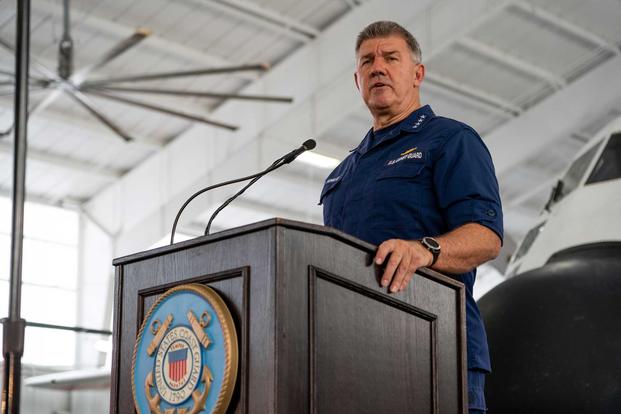The nation's first sea-going heavy icebreaker in more than 45 years will be named Sentinel -- a nod to its predecessors as well as future missions in the polar regions, Coast Guard Commandant Adm. Karl Schultz said Thursday.
In his fourth and final "State of the Coast Guard" address delivered at Coast Guard Air Station Clearwater, Florida, Schultz announced the name and said design work continues on the $745.9 million vessel, expected to be delivered in 2025.
The service had hoped the vessel, being built by Pascagoula, Mississippi-based VT Halter Marine Inc., would be finished by 2024.
Read Next: Russia Attacks Ukraine as Defiant Putin Warns US, NATO
But given the complexities of the design and delays related to the COVID-19 pandemic, Schultz described that date as "aspirational."
"It's a state-of-the art ship that requires exacting designs, complex steel work and systems integration," said Schultz, who will retire from the Coast Guard this spring.
"There's international collaboration, the implications of COVID and international travel. There were some things that were delayed, and we made a couple of adjustments. Put it all together, and that pushes delivery to the spring of 2025," Schultz said.
The Sentinel is the first of three planned Polar Security Cutters; the Coast Guard issued a $552.7 million contract for the second ship in the class last December.
Currently, the Coast Guard operates the 46-year-old heavy icebreaker Polar Star, now deployed to Antarctica, and the medium polar icebreaker Healy, commissioned in 2000.
The name Sentinel, according to Schultz, provides a connection to the Polar Star and its sister ship, Polar Sea, which have largely supported Antarctic operations over the past four decades.
It also represents its mission and role in the nation's naval fleet, he added.
"It evokes a lot of strong things in terms of us projecting sovereign presences in the high latitudes, both the Arctic and Antarctic," Schultz said.
He declined to announce the names of second and third planned cutters, but added that the Coast Guard has a "couple of good second and third names up our sleeve."
The service is in the midst of its largest ship recapitalization effort in decades, replacing its medium endurance cutters with 25 360-foot Offshore Patrol Cutters and planning to build three medium icebreakers, known as Arctic Security Cutters.
In the past decade, it has commissioned nine of 11 planned National Security Cutters and built dozens of Fast Response Cutters.
It also plans to build a variety of ships known as Waterways Commerce Cutters.
Schultz said that despite the delay in delivery of the Sentinel, the service will have no gaps in its ability to provide support in the polar regions and plans to keep the Polar Star running for several years after delivery of the first Polar Security Cutter.
Polar Star, he said, may be "tired and old," but "we'll keep it a couple of years" until delivery of the second heavy icebreaker because "quite frankly, we need the capacity."
"I'm encouraged because of the hard work of our sailors on the Polar Star," Schultz said.
The Coast Guard heavy icebreaker Mackinaw, commissioned in 2006, plies the Great Lakes, ensuring the safety of shipping lanes and repairing aids to navigation.
Editor's note: This story was updated to include the cutter Mackinaw, which serves the nation's inland waterways and does not deploy to sea.
-- Patricia Kime can be reached at Patricia.Kime@Monster.com. Follow her on Twitter @patriciakime
Related: After Pandemic Hiatus, America's Only Heavy Coast Guard Icebreaker Returning to Antarctica













